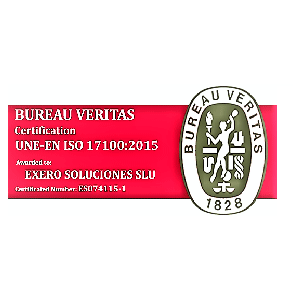Bad Grammar and Ambiguity in Translation
Every job has ideal working conditions. A janitor in a school where the students and staff are very clean and respectful ... and no one misses the toilet bowl. A truck driver on a route with little traffic and lawful drivers, no one swerving in and out of lanes at 100mph. Or a chef in a restaurant without picky, entitled diners; in fact, they give their compliments to the chef.
Take a second to picture what your ideal situation would be.
Now can you guess what the ideal conditions for translators would be?
Not sure?

Well, we dream of well-written, unambiguous source texts free of grammar and punctuation mistakes. Unfortunately, we can’t always get what we want (please read in Mick Jagger’s voice).
Admittedly, translators tend to be a bit neurotic when it comes to language and grammar. But when it comes to our job, a poorly-written document has actual repercussions. Depending on the degree, it has the potential to hinder our productivity and threaten the quality of our work.
So, this begs the question: how do translators confront bad grammar, ambiguity, and mistakes in source texts?
HOW BAD IS IT?
The first step in the translation process is to read the entire text in question. We do this not only to familiarize ourselves with the content but also to look for any problematic areas. If there is any bad grammar, ambiguity, or missing words, we can spot them before we start. This allows us to establish to what degree they will affect our work.
Given our experience and knowledge, the most common strategy is to use our powers of reasoning and deduction. We rely heavily on context. Even if some bad grammar is present, we can still usually deduce the author’s intended meaning and convey it in the target language. This is especially true for more informal texts such as a letter, email, or company memo. We generally have more leeway with these texts. In this situation, if we can avoid consulting the client, we will opt for using our best judgement.
"Why?", you ask. Well, first of all, it takes time. Time we could be using to translate. Secondly, we may be seen as somewhat of a nuisance for bringing up the smallest of errors, which may be simple typos. There is a potential risk to strain the client-translator relationship. This may also put our problem-solving skills into question.
CONSULTING THE CLIENT
That being said, there are times when consulting the client is preferred, if not necessary.
Once such case is when bad grammar leads to ambiguity. Let’s say that we come across a sentence with a missing word. Or that the sentence structure is a jumbled mess. Perhaps the punctuation is lacking (or nonexistent). Whatever the case may be, we’re left with some doubts. There is ambiguity, and not the intentional kind (we’ll get to that later).

The above image is a general example of syntactical ambiguity. This is not a consequence of bad grammar, but it goes to show you how easily ambiguity can be created.
The following is a modified version (for privacy reasons) of a real-life example we’ve encountered:
“Coverage excludes damage caused by:
Failure or improper location and installation joints, expansion or perimetal joints in the installation area.”
Our job as translators is to accurately render the source content into another language. This is difficult if a part of the text is ambiguous to the point of being undecipherable. In this instance, we need to contact the client and ask for clarification. That way we can ensure that our client gets what they pay for: a high-quality translation. This demonstrates our dedication and professionalism. While we wait for the client to reply, we can proceed with the rest of the text and come back to it.
Although accuracy for the sake of quality is one of our main goals, there are more important reasons for asking the client to shed light on uncertainty. There are some fields, in particular medical, technical, and legal, where improperly translated content can have dire consequence. An erroneous diagnosis. False culpability. Safety hazards. And the translator is ultimately responsible. Therefore, when we find ourselves at such a crossroad, it’s best not to guess or assume anything. In fact, I’d venture to say it’s our obligation to consult the client.
Nevertheless, we need to find the right balance.
DON’T GO OVERBOARD
We’ve established that consulting the client is a good practice and often necessary. Spamming a client with queries related to bad grammar, however, may not be the best way to go about it.
Instead of contacting the client every time we come across something ambiguous, we can make a list. During the initial readthrough, we can jot down all potentially problematic areas. Then we narrow the list down to those that cannot be resolved with our best judgement and send it to the client. We greatly appreciate a quick response time from them. Likewise, they appreciate being consulted in an orderly fashion.
Disambiguation is in the best interest of both parties. Therefore, we find that the majority of clients are more than happy to help and willingly respond to queries. This sort of working relationship, however, should not be taken for granted. When working with new clients, boundaries may need to be established beforehand. That way we avoid the possibility of our consultations being misconstrued as criticism or correction.
WHEN SHOULD BAD GRAMMAR OR AMBIGUITY BE RESPECTED?
There is a time and a place for ambiguity and bad grammar. And that is when it is intentional. We most often see it used in this manner in literature and journalism. Let’s take an example from the latter.
Headlines are particularly important and powerful tools. They must catch the readers’ attention. Sometimes that is achieved through shock. Other times headlines are purposely ambiguous to pique the readers' interest. As translators, we have to convey that because it’s the author’s intention. This is when ambiguity should be respected (if possible) rather than corrected.

We need to know how to differentiate between the two.
Let’s look at another example, but this time from literature. Authors often make use of bad grammar or irregular structures to enhance their writing. Many play with sentence fragments to establish tone, rhythm, or style. Clearly, these elements must be respected. Similarly, they frequently integrate unconventional grammar into dialogues. This technique is used to reveal certain aspects about the character(s) in question. There are certain things we may be able to infer from this such as class, education, setting, or geographic location. Just as we maintain an author’s style and tone, we must also maintain these elements.
Poetry, like literature, has a lot more flexibility in terms of language usage. In fact, poets tend to play with language more than authors of prose. Consequently, intentional ambiguity is highly prevalent in poetry. This, like other literary devices, must also be respected. This is part of the reason why it is so difficult to translate.
Can you think of any other examples?
OTHER CONSIDERATIONS:
We would like to note that issues with bad grammar, ambiguity, and spelling or punctuation mistakes are just that, mistakes! We’re all humans here and sometimes an error or a typo slips by us. I mean, even translators make mistakes from time to time. That’s why thorough revision and proofreading are so important for writers and translators.
We’d also like to recognize that some errors are not actually human errors. As wonderful as CAT tools are, they’re not always perfect. Some documents are particularly tricky to convert. As you can imagine, this can lead to all sorts of problems. Before contacting the client, we should simply check the source document. In the off chance that the client has not supplied the original, we then would need to contact them and ask for it. We can also take the opportunity to ask any questions or for clarification.
CONCLUSION:
Mistakes are inevitable. Sometimes bad grammar or ambiguity make their way into the documents we translate. As professional translators, we have to know how to gauge any errors we find and decide on the most prudent way to deal with them.
At Exero Soluciones, we strive to provide the highest-quality translations and to keep our clients happy by maintaining a healthy working relationship with them. We’ve worked hard to find the right balance between autonomous problem-solving and sensible client consultation: we won’t take any risks when it comes to your content. With knowledge, expertise, and open communication we guarantee you’ll always get the most accurate translation.







Comments